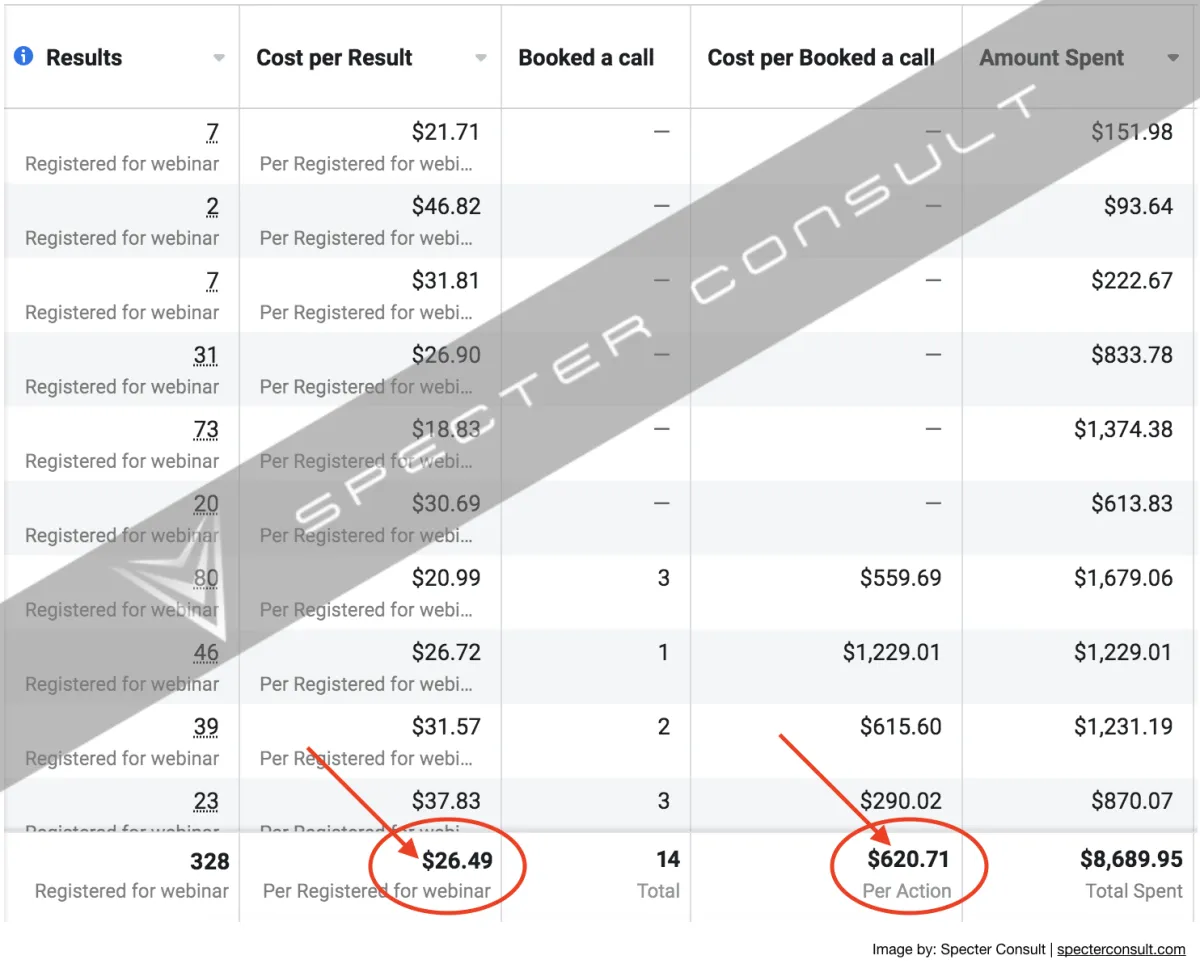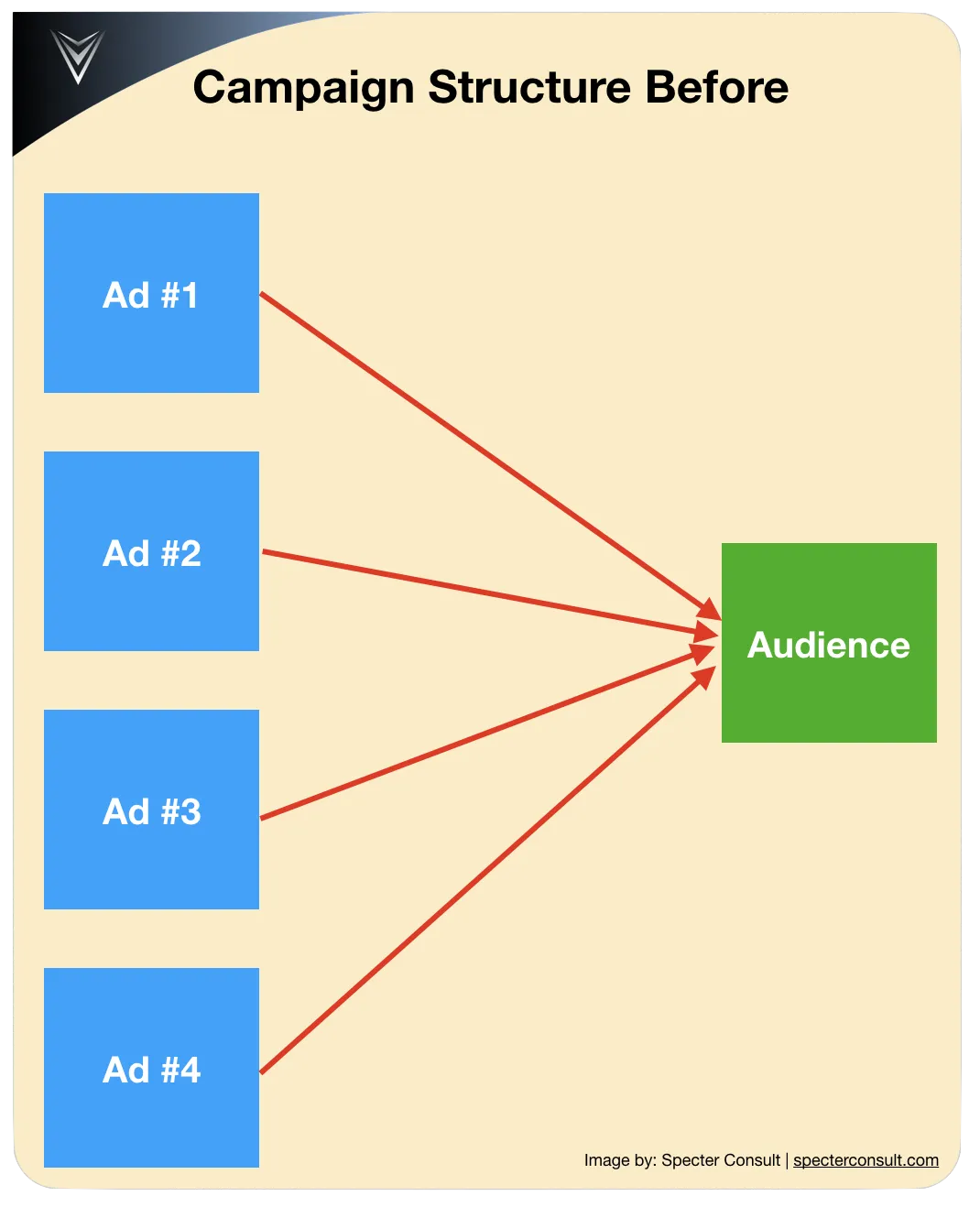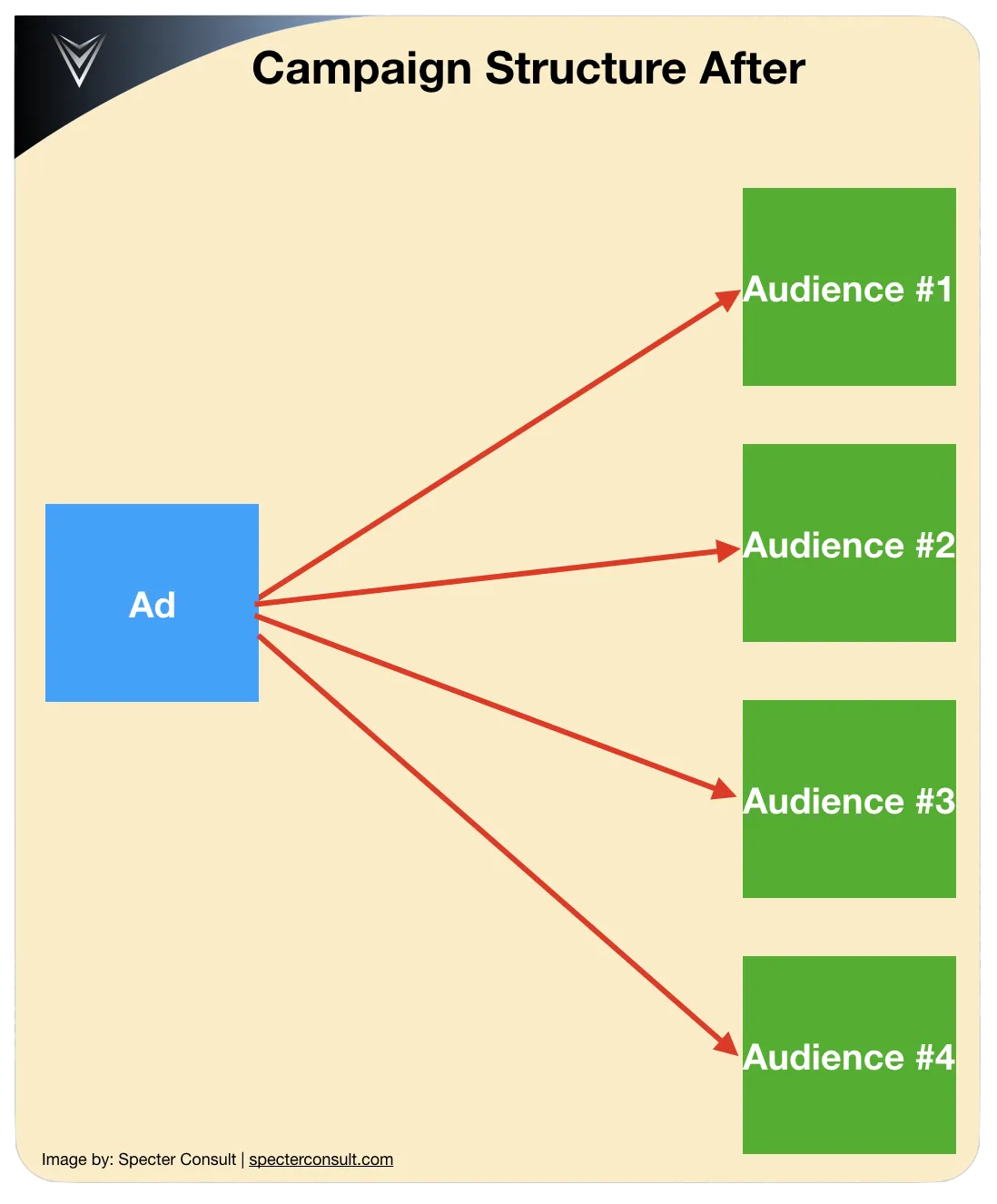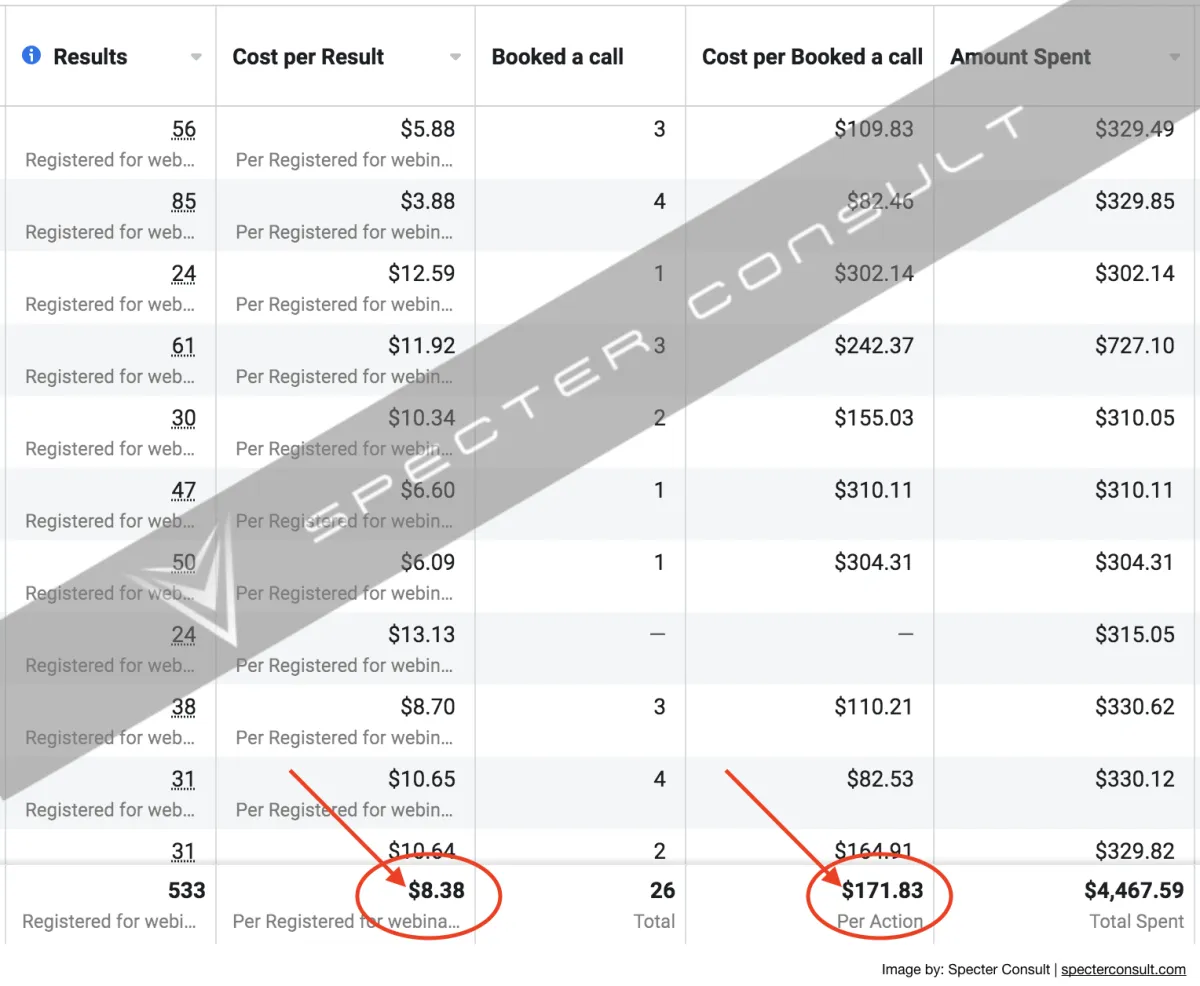
[Case Study] How We Scaled Our Client’s Business From $15K/Month To $30K/Week In 35 Days And Dropped Acquisition Cost By 84.1%
If you're a consultant, coach or other expert then you already know that ever since COVID-19 hit in 2020, digital marketing has become more important than ever to grow your business going forward.
In fact, one aspect of digital marketing in particular is blowing up right now: digital advertising. Right now the global spend in digital advertising is projected to be $389B in 2021 (a 19.7% increase from 2020) and amounts to 49.6% of the global spend across all advertising media).
With that huge investment in ads, surely there must be at least an equally massive return to justify it right? There is, especially when you can track every dollar with an ad platform like Facebook. It's exactly why more and more savvy entrepreneurs and business owners have been capitalizing on this opportunity.
Like my client who runs a fast growing strategy consulting firm in the U.S and uses Facebook advertising to get clients and scale his business. Given that Facebook currently has 2.8 billion monthly active users (which is roughly 36% of the entire world population) and given the fact that most people are at home nowadays due to the pandemic measures and that people spend about 2.5 hours per day on social media,
...the conditions for reaching his customers and scaling his business almost couldn't be better.
That said, he was dealing with a big challenge with his advertising which you'll see in a moment. In this case study I'll explain how our strategy helped him scale his business from $15K per month to $30K per week in just 35 days, while bringing down his cost per acquisition by 84.1%.
If you're using (or want to use) Facebook advertising, then you'll love what I'll be sharing with you in this case study because it breaks down in depth some of the most critical mistakes to avoid so you can have profitable ads and just profitable marketing in general for that matter.
So, What Was Going On?
My client (who I'll call "Frank" as we continue) was dealing with something that happens for a lot of people when they run ads:
“The ads were going good at first but then went to sh!t.”
He was running ads to an application funnel. It looked like this:

Frank was marketing a $3,000 online education program on leadership development. He built up his daily ad spend to $1000 per day and was getting a 3X cash collected ROI.
To stay profitable with this funnel his KPI goals were a max $15 cost per lead and a max $300 cost to get a booked call. His close rate was 20%, meaning 1 out of 5 people on the call bought the program, bringing the cost of acquisition on average to max $1500.
Everything seemed to go well.
However, since the start of Q4 2020 Frank's cost metrics were spiking up. Without having changed anything, the cost per lead was as high as $46.82 per sign up and cost per booked call was as high as $1,229.01.

Even after Q4 2020, those high metrics stayed consistent. And with those metrics and his 20% close rate, acquiring one client would cost on average $3,103.55.
And given the fact that the price of the product was $3,000, those metrics were severely cutting down the profitability of the ads and business as a whole.
Aside from rising cost metrics, the quality of the incoming leads and booked calls went down as well.
The number of prospects that showed up for the calls went down, sales resistance rate was high, lots of price objections and the infamous “I need to think about it...”, were running havoc on the business’ bottom line.
To solve these issues, Frank tried a number of different things:
In an attempt to get more quality people watching the webinar and booking a call, he made the webinar and calls paid. That didn’t help, the difference was negligible.
He lowered the price of his offer but that didn’t help. In fact, the results got worse from doing so. He attracted less leads when the price was lower than when it was higher.
(Contrary to popular belief, lowering the price DOES NOT automatically get people willing to buy. Only two key factors can do this which I’ll break down in a moment.)
He tried launching different ads and changed his webinar multiple times but that also didn’t help to change things.
Revenue went down (got to roughly $15K/month) and at a $1000 per day ad spend, he was quickly running into cash flow problems.
If you’re anything like Frank then I’m sure you can imagine the sheer emotional turmoil that going through all of this caused.
Suffice to say, this was a very big, complex and painful problem.
How We Solved The Problem
The main reason Frank's efforts to turn this situation around didn’t work was because they were based on a wrong problem definition.
A lot of time I see people try to tackle this situation by defining the problem as:
“How to get more qualified leads?” Or “How do I target better people?”
And while that isn’t necessarily a bad problem definition, it’s too linear for this scenario because it misses one critical factor which is behavior at scale (more on that in a sec).
You see, the problem my client Frank was facing wasn’t so much getting leads or even qualified leads for that matter. In fact, he was actually capable of doing both.
The real problem was:
“How to consistently and exclusively get qualified booked appointments at a $1000+/day ad spend without spending more than $15 per lead and $300 per quality booked appointment”
You might think that this is obvious given his KPI goals to stay profitable, however this is a significantly different problem definition from the first one and here’s why:
When you run ads on Facebook you’re not automatically reaching the full size of your audience, as you can see in the diagram below.

The primary reason this happens is because Facebook as a social media platform, values its user experience above anything else.
Meaning, your content (in this case ads) will always be shown to a small group of people first to measure how it performs.
Now, when you run ads on Facebook (or any ad platform for that matter) at small budgets (under $500 per day), the ad platform can optimize your campaigns quite effectively. Meaning, it's fairly easy to get a pretty good bang for your buck.
The reason why is because at smaller daily ad spends, you’re essentially targeting and reaching a narrow audience. Even if the total audience size of your targeting is like 1M+ people. At those daily spends you won’t come across many issues, especially if things are already working for you.
However, the more you scale up that ad spend and especially once you break into the $500+ per day spend, the more you’re broadening your audience and as a result, showing your ads to essentially different people.
This is regardless of whether you’ve set a specific audience targeting in Facebook’s Ads Manager.
- And here’s the thing -
This broader audience Will NOT respond to your ads the same way the narrow audience did.
The reason why is because the ads that worked with the smaller audience were based on messaging proven to work at a smaller scale. In other words, once you start tapping into that wider audience and your marketing machine starts to break, it’s because there’s a misalignment of message-to-audience.
So when you try to scale up your ads without taking the messaging into consideration, then that misalignment will kill the profitability of your ads. This is one of, if not the most crucial factor to address when it comes to making advertising profitable at scale (and just in general for that matter).
This is why in order to maintain profitability at scale, the sales message must be adjusted to be fit for scale. That’s the first thing I helped my client fix.
A lot of people get this wrong because they think that the sales message is about the product/service/the solution. That’s not what messaging is about.
Messaging is about connecting your ideal client’s desire (what they want) with your offer (the outcome your product/service provides).
For example, you could be selling a fitness product to busy business owners but the product is not what the message should be about.
The message would much sooner be something along the lines of "the 15-minute muscle shock exercise for busy business owners to lose weight".
Another example, say you’re in IT and selling a cloud based product/service to help businesses save money on hiring new staff. The message could be something like “drop recruiting costs by 20% with 3 clicks”.
Say you offer consulting services to businesses about improving the productivity of a sales team then the message could be “Boost your sales team's productivity by 30% without hiring more staff”.
All pieces of the marketing (ad, landing page, webinar etc.) follow the message you craft.
Crafting The Sales Message, Offer And Funnel For More Profit And Cash Flow
To come up with the right messaging for my client Frank, I helped him survey and interview the best segment of his client base (those who got great results, those who took immediate action, those who paid in full and those who were fully committed to the process and getting results).
This also showed us whether his offer needed to be adjusted and gave us input on what messaging we could craft around it to work best at scale.
Armed with this new information we repackaged the offer and increased its price from $3,000 to $6,000. An offer exclusively for the upper segment of his client base.
Raising the price would also help to boost cash flow of the business as cash flow is primarily determined by the offer. We then crafted messaging around this new offer to consistently and exclusively get the right clients at scale.
From there we created direct response ads to exclusively target the best segment of the client’s customer pool. Having good messaging is important but if there isn't powerful direct response copy behind it, then it won't give the results you want.
We measured the effectiveness of the new messaging of the ads by looking at the click-through rates, cost per click on the ads and mostly the cost per lead.
Within 3 days we saw which ads were winning because we knew that the message that the market would respond to best, would be the ones that generated most volume with the lowest cost metrics.
From there we took the winning message and made the landing page follow that message which resulted in higher conversions, better quality of leads coming in and lower costs.
This is why it’s absolutely crucial to look at the messaging first because the profitability of your ads (and entire marketing campaign for that matter) starts and ends with that.
It controls everything from costs to reach people, the quality of leads coming in and ultimately your cost to acquire a new client. This is the same even if you’re doing organic client attraction.
We further optimized the funnel by rewriting the webinar to more effectively qualify the right prospects and to effectively communicate the value of the offer with the higher price to increase quality of booked appointments.
Restructuring the campaign in Facebook
We restructured Frank's campaign in Facebook for more efficient handling of ad spend so that ROI would be maximized.
A lot of people don’t realize that the way you set up your campaigns is important because it influences your costs. Frank, like a lot of people, had his campaign set like this:

Different ads targeted to the same audience. The problem with this structure is that it quickly leads to ad fatigue and limitation of reach.
The reason why is because Facebook ads (like any other ad platform) is auction based. Meaning, when you set up an ad in your account you’re entering that ad into an auction to display it in front of the audience you’re targeting with that ad.
However, when you’re running multiple ads to that same audience in your ad account, you essentially end up competing against yourself because now all those ads are trying to win the auction for that same audience.
Facebook then limits the amount of new people the ads will reach thus leading to the ads performing worse over time. Cutting down profitability fast.
This is one of the reasons why a lot of people get ads running good for maybe a week or 2 or even a month and then it just goes down dramatically.
This in turn can trigger a nasty feedback loop where you’ll think that some ads just aren’t good and you shut them off, when in reality they would be profitable had the campaign been set up correctly.
When you don’t do this correctly you’ll end up continuously churning out new ads, turning off ads that actually are profitable and keep ads running that you THINK are profitable but are actually just draining your wallet.
To stop this, we restructured Frank's campaign like this:

This structure helps to keep your ads profitable for as long as possible because they’re not competing against other ads in your ad account for the same audience.
It also maximizes your scale and profitability because you’re targeting a wide range of audiences relevant to your business.
We built up the daily spend to $500/day. Instead of immediately going to $1000/day like Frank had in the beginning, I wanted to get him the same if not more results out of minimum ad spend.
More Performance From Page Speed
Like I said earlier, Facebook as a social media platform cares about 1 thing above all else: its user experience.
This is why anything deemed by them as being bad for their user experience gets penalized. In the case of advertising, this penalization often shows up as higher costs to acquire leads, clients and customers.
One notable cause of this penalization is web page loading speed. Specifically, if it takes more than 3 seconds for your web page to load.
This carries even more weight with mobile because most traffic nowadays comes from mobile devices.
In the case of my client Frank, his landing page on mobile had a loading time of 5.6 seconds. Facebook does not like that and limits the reach of your ads because it will be like:
“Hmmm I don’t think your website offers a good experience to my users so I don’t feel like showing this to more people.”
What then happens is your ads get shown to the same people over and over. Losing its effectiveness rather quickly.
This then leads to higher cost per impression (the cost to reach 1000 people), higher cost per lead and ultimately higher cost per acquisition.
We optimized all of Frank's funnel pages for speed and brought down the loading times from 5.6 seconds to 2.8 seconds. These things if left unchecked, will cause costs to spike up and tear up the profitability of your ads.
The Results
In 35 days we:
Dropped cost per lead from $26.49 to $8.38, a decrease of 68.3% and well within the Frank's KPI to be profitable.
Dropped cost per booked appointment from $620.71 to $171.83, a decrease of 72.3% allowing Frank to get way more bang for his buck.

Increased quality of booked appointments, measured by the close rate as this went up from 20% to 35%. This was without even changing anything about the sales calls (which is also one of the things I help my clients optimize).
This brought down the cost per acquisition from $3,103.55 to $490.94, a decrease of 84.1%.
The business went from $15K per month to $30K per week in cash collected revenue with a $500/day ad spend. Frank is currently on track to hit $100K per month in cash collected profit from his advertising.
The shortest distance between two points isn't necessarily a straight line.
When it comes to solving challenges with your marketing (or any business situation for that matter) it’s important to look at things from a broad perspective and never assume that you’re seeing the full picture at any given moment.
And instead, question what is in front of you in order to reveal more of the truth that was already there.
I call this non-linear thinking and it’s the thing my clients value the most by far because it allows us to see more of the full picture, connect dots and find opportunities for growth that otherwise would not have been seen. That combined with proven strategies and systems is how we profitably scaled our client’s business in only 35 days.
If you also want help with making your ads work and consistently attract people who are ready to sign up for your high value offers so you can grow your bottom line without throwing tons of money into a black hole trying to figure it out, then simply click below and apply for a free Scaling Strategy Call with our team.

Want Us To Help You Scale Your Business?

© 2023 SpecterConsult.com. All Rights Reserved.
Terms & Conditions | Privacy Policy | Contact Us
This site is not a part of the Facebook website or Facebook Inc. Additionally, This site is NOT endorsed by Facebook in any way. FACEBOOK is a trademark of FACEBOOK, Inc.
DISCLAIMER: The earnings and income representations made by Paddy Mayemba, specterconsult.com, Specter Consult and Specter Consult Products are aspirational statements only of your earnings potential. The success of Paddy Mayemba, previous or existing clients, testimonials and other examples used are exceptional, non-typical results and are not intended to be and are not a guarantee that you or others will achieve the same results. Individual results will always vary and yours will depend entirely on your individual capacity, work ethic, business skills and experience, level of motivation, diligence in applying the Specter Consult Products, the economy, the normal and unforeseen risks of doing business, and other factors. All business entails risk as well as massive and consistent effort and action.



